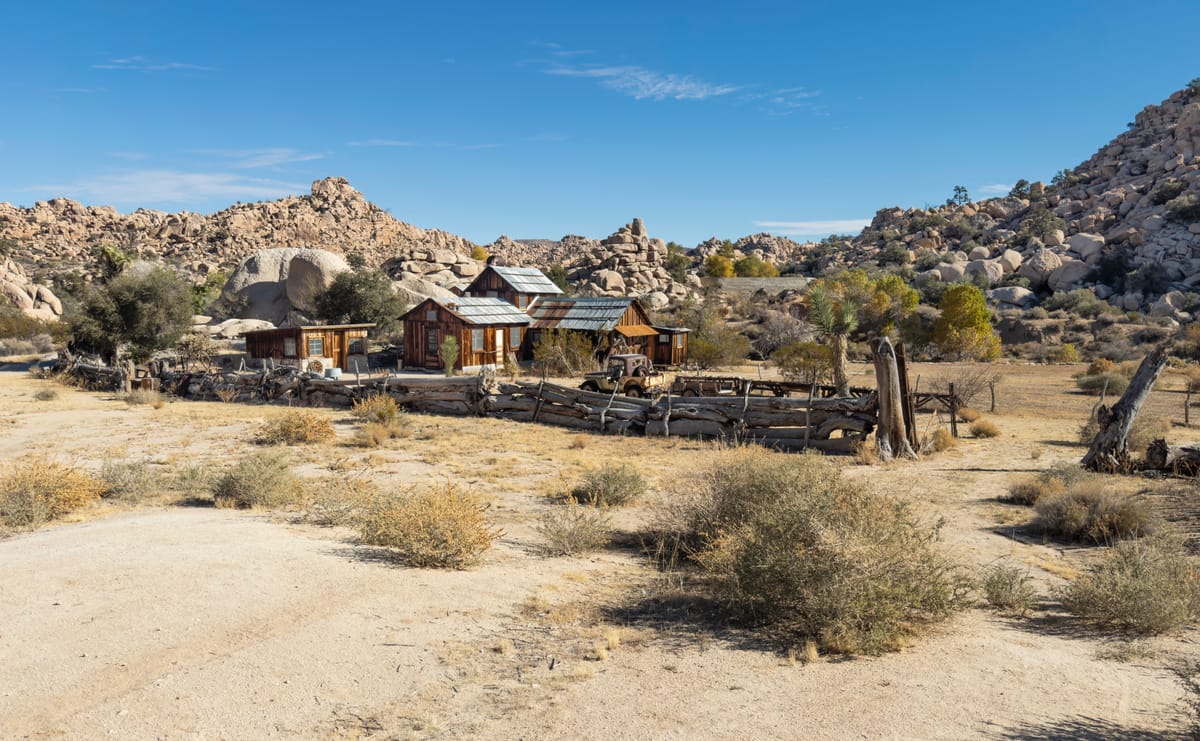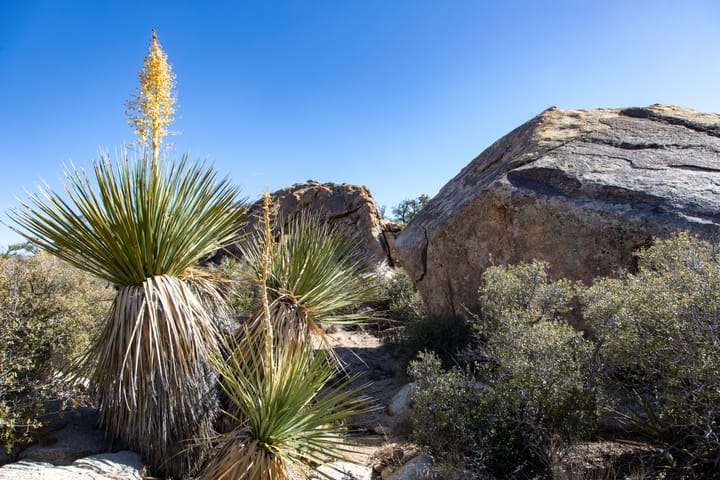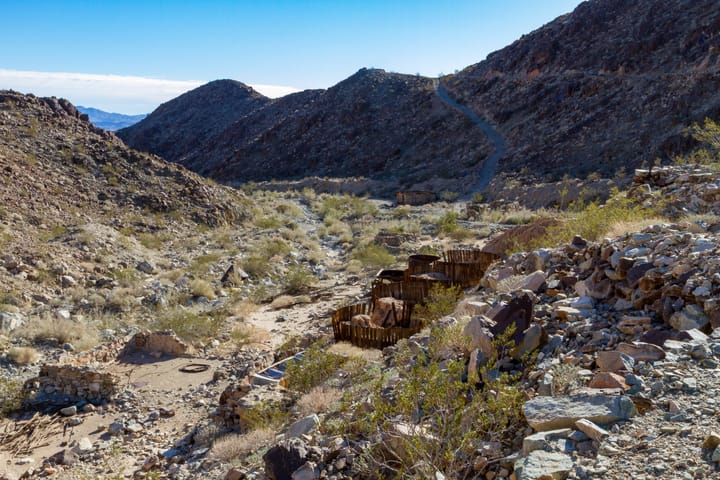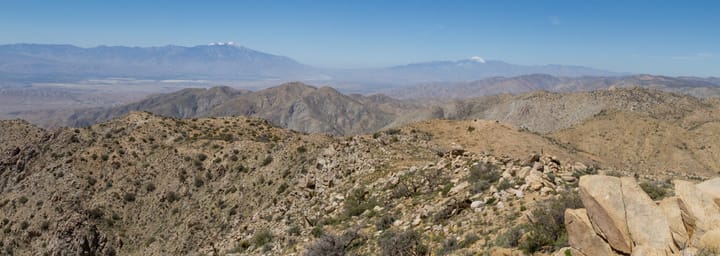While not as well-known as many of the other visitor attractions in Joshua Tree National Park, Keys Ranch is one of the true gems of the park. To protect the ranch from theft and vandalism, the Park Service only allows access via a ranger-guided tour. The tour requires advance reservations on Recreation.gov, with a nominal fee charged for the reservation.
Keys Ranch was the longtime home of renowned prospector, miner, and rancher William F. (Bill) Keys. Keys came to the region in 1910, becoming one of the area's most prominent residents and living at his ranch until his death in 1969. The tour covers his fascinating life story while showcasing the amazing assortment of ranching, farming, and mining equipment he collected over the decades. Bill became an expert at fashioning anything and everything the ranch needed to be fully self-sufficient, using whatever he could salvage from abandoned mines and homesteads in the area. Today, the ranch is a veritable outdoor museum set in a ruggedly beautiful amphitheater.
Bill grew up in Nebraska, leaving home in 1894, at the age of 15, to become a cowboy. After working as a ranch hand in Nebraska for a few years, he worked his way west, eventually landing in the Twentynine Palms area around 1910. Along the way, he found work in many fields, acquiring knowledge and skills which would serve him well when he finally settled in the area that is now Joshua Tree National Park.
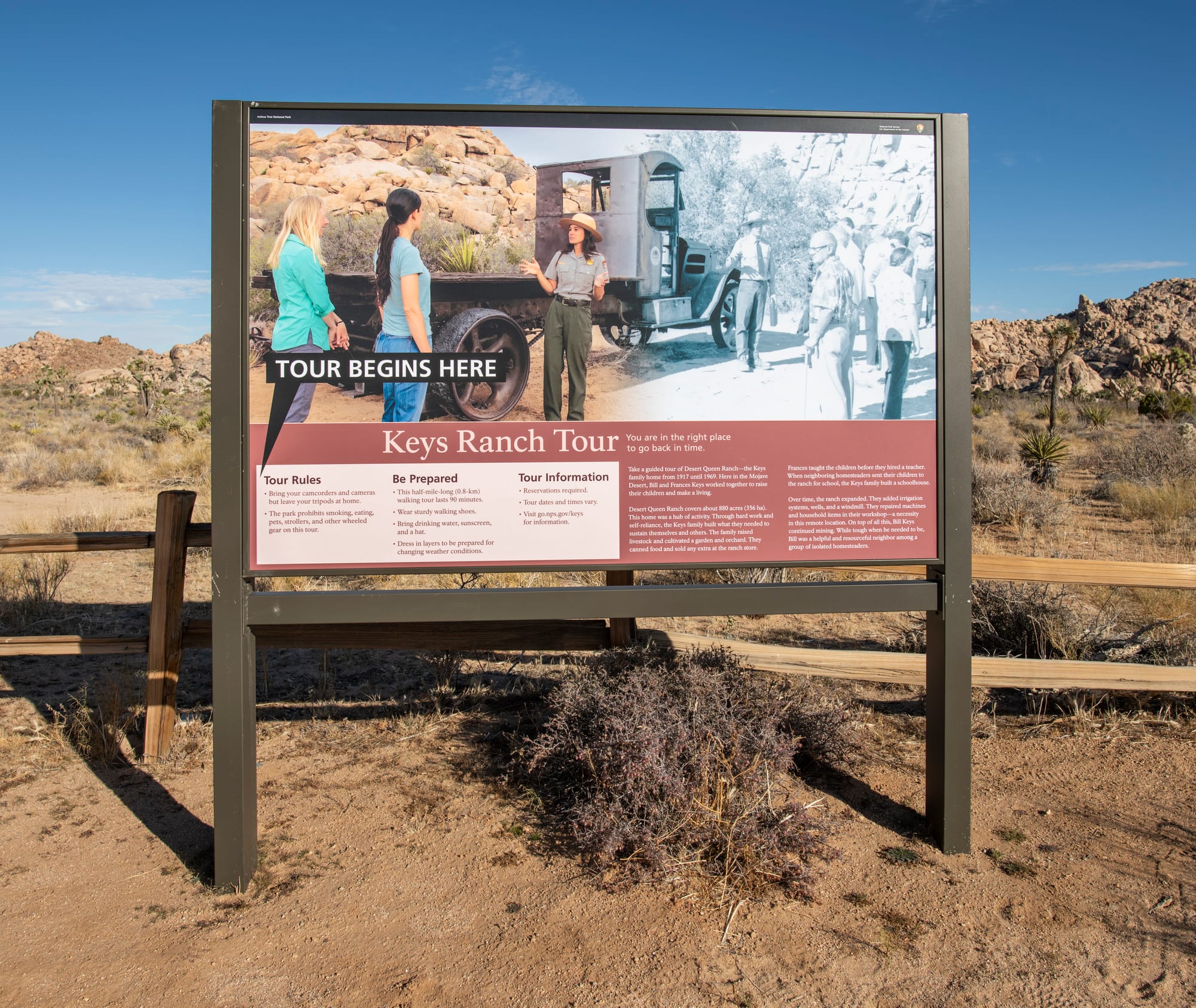
Bill's first stop on his journey West was instrumental to his future as a miner, when he worked several mining and ore mill jobs in the Colorado Rocky Mountains. In about 1898, he moved on to Arizona, enlisting to join Teddy Roosevelt's Rough Riders. When a training accident ended that venture, he moved on to Jerome Arizona, working at a copper mine and smelter. Soon more moves and jobs followed, including a couple more cattle ranching stints and even a position as a deputy sheriff for Mohave County in Arizona.
Shortly after the turn of the century, Bill's wanderings finally led him to the deserts of California, leading to a series of mining claims in the Death Valley vicinity. During his various prospecting forays, he became acquainted with Walter Scott, better known as Death Valley Scotty (of Scotty's Castle fame). When Scotty needed a "real" gold mine to show prospective investors in 1906, he enlisted Bill Keys to help escort the investors' mining engineer to Keys' Desert Hound Mine, deep in Death Valley's Black Mountains. Along the way, the infamous "Battle of Wingate Pass" ensued, in which fake bandits "ambushed" the party, hoping to scare them off before they reached the mine. Unfortunately, one of the gunmen accidentally shot Scotty's brother, Warner, badly injuring him and blowing up the scheme. Only a lack of cooperating witnesses saved Scotty and Bill from a trial. Bill sold his Death Valley claims in 1907, resuming his wandering and prospecting.
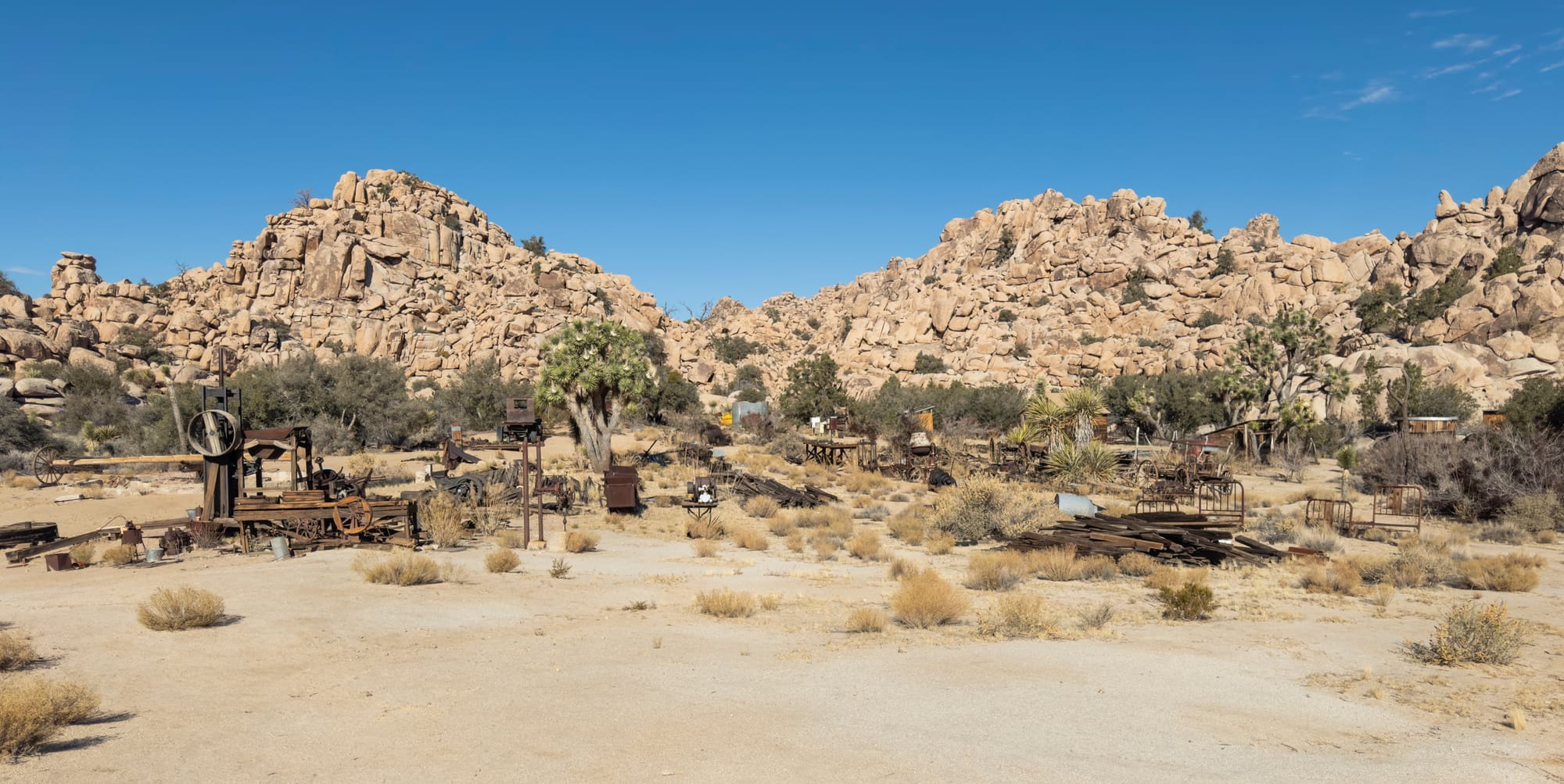
Bill's future in the Joshua Tree area began to take shape when he landed a job at the Desert Queen Mine in 1910. He served for several years as the supervisor, assayer, and equipment caretaker for both the mine and the nearby Desert Queen Mill site. When the mine owner died in 1915, still owing him back wages, Bill filed a claim for the money owed. In 1917, he was awarded the deed to both the Desert Queen Mine and the Desert Queen Mill site to settle his claim. He had been living in a small house at the mill site since 1913; this was to become the hub of his Desert Queen Ranch (today called Keys Ranch). Bill filed for an eighty-acre homestead for both the mine and the mill site, then further enlarged the ranch in 1926 with an additional 320-acre homestead claim. Subsequent land acquisitions resulted in the current 880-acre ranch.
Bill continued to work the Desert Queen Mine intermittently until 1923, then full time from 1932 until 1941. (See Desert Queen and Eagle Cliff Mines for more.) Over the years, he was also instrumental in several other mining projects scattered around the Joshua Tree area. (In fact, it is hard to find a part of the park that has not seen his influence.) In addition, now that he had a permanent home, he turned his attention to building a ranch and raising a family. He married Frances May Lawton of Los Angeles in 1918, bringing her back to his new ranch. They had a total of seven children, losing two shortly after birth; the remaining five grew up on the ranch. Bill built a schoolhouse and hired a teacher for his children, which soon became a community school for the children of other local ranchers and miners. The schoolhouse and teacher's residence remain today.
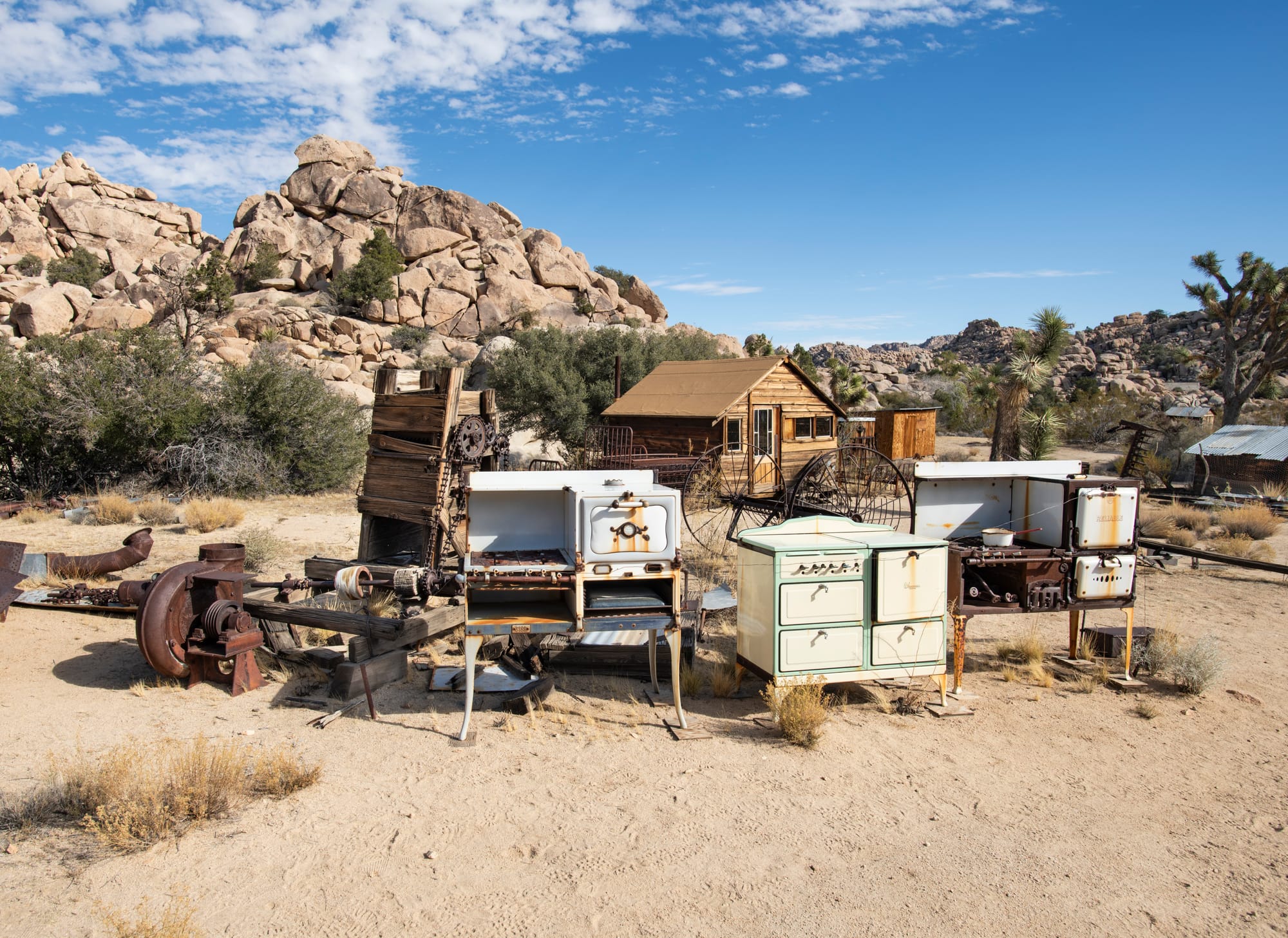
Bill raised cattle and other farm animals to provide food for the family. He and Frances built several reservoirs above the ranch house, damming a small creek which ran through the property. This provided water to irrigate the fields, orchards and gardens. They also built a large retaining wall to protect the house and orchards near the creek during intermittent floods— using an improvised derrick which is still in place. Most of the various tools and machines used to run the ranch and farm are on display in the yard.
Bill used his extensive knowledge of ore milling to provide income for his family. In 1930, he bought the nearby Wall Street Mill, made improvements, and began to offer custom milling to local miners. He also did custom milling at the ranch, employing a huge arrastra, a steam-powered (later gasoline) one-stamp mill, and other milling equipment he acquired from area mines. His extensive collection of milling equipment, most of it in pristine condition, is a highlight of the tour.
Bill was an inveterate scavenger; some might even say a "packrat." He collected with a purpose, though— he was an expert at re-purposing scavenged items into useful tools for the ranch. A machine shop near the house is full of salvaged items, and there are three large pallets of "spare parts" near the mill area.
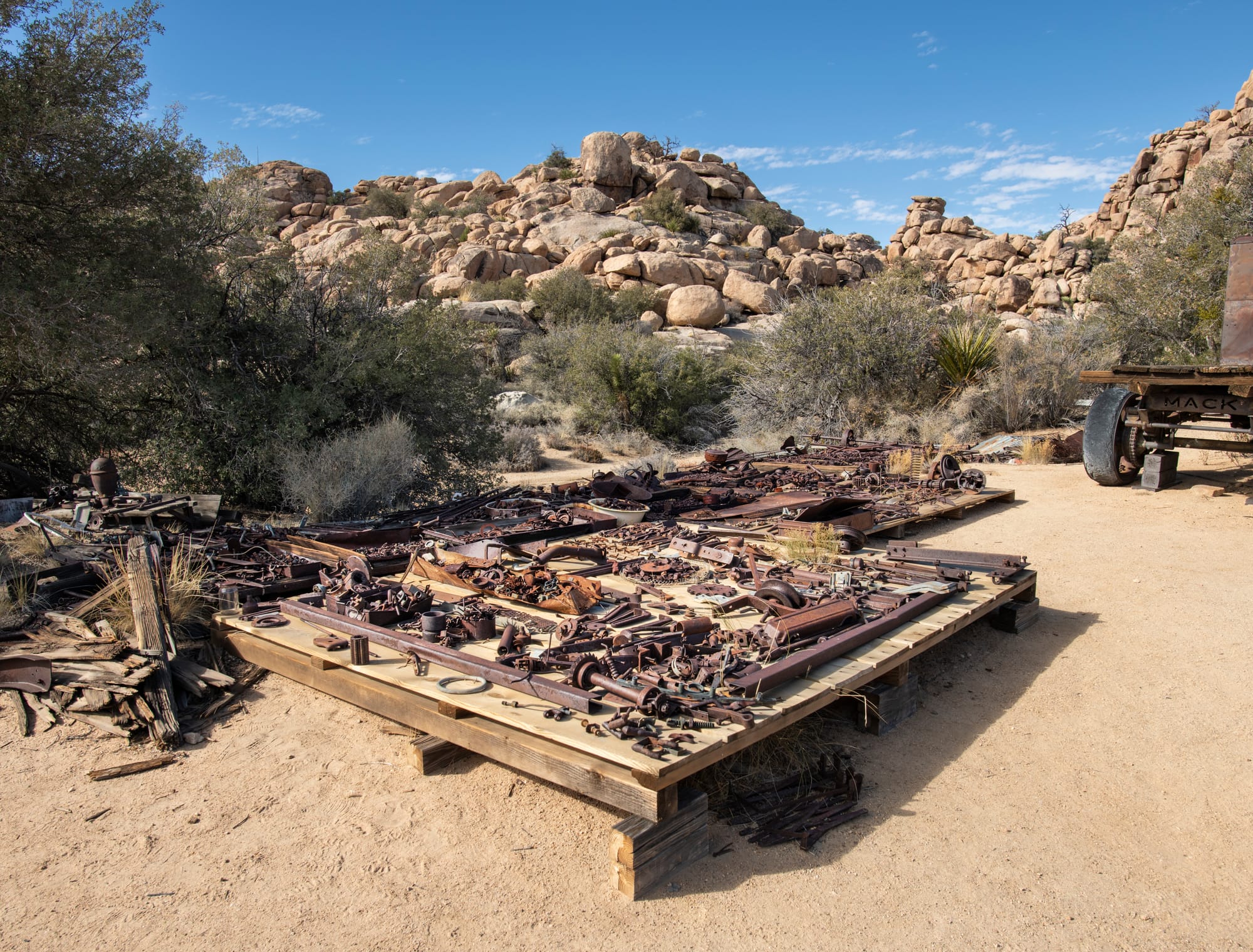
One of Bill’s most amusing creations was a firewood sawmill, which he fashioned from a 1917 Fordson tractor, originally used to plow the fields, rigged up to a large saw blade assembly. Another favorite is the tack room fashioned out of two old wooden cyanide vats. And of course, no ranch would be complete without an assortment of old vehicles; there is no shortage of those in the yard. The highlight is a 1922 Mack truck, which Bill pulled out of a sandy wash and drove home.
Bill's world changed in 1936 with the creation of Joshua Tree National Monument— his ranch was now a private landholding within a National Monument. As the inevitable stream of tourists to the area began to grow, what he first considered an annoyance soon was seen as an opportunity. He built a small General Store near the ranch house, from which Frances sold canned foods and tourist trinkets. In 1938, he moved an abandoned homestead cabin to the yard and rented it out to tourists for the night. He even rented two outdoor beds to guests who wanted to sleep out under the stars! Both the rental cabin and the beds are still there. Around 1960, Walt Disney Studios filmed two episodes of Walt Disney Presents at the ranch; Bill even co-starred in one of them (Wild Burro of the West). A filming shed built by the studio remains today.
Frances passed away at the age of 75 in 1963. Bill sold the ranch to an investor the following year, with the provision that he could live there until his death. The investor subsequently traded the ranch to the National Park Service in exchange for government land near San Diego. Bill continued to live at the ranch until his death on June 28, 1969; he is buried at the family cemetery alongside Frances and three of their sons who died at the ranch.
This is only a brief summary of the fascinating life story of Bill Keys, a true pioneer of the West. The Park's visitor centers sell a very good biography if you want to learn more: William F. Keys of Joshua Tree National Park, by Thomas Crochetiere. If you take this highly recommended tour, the ranger will fill you in on Bill's story as you tour the ranch.
Directions
The tour requires advance reservations, available at Recreation.gov (Keys Ranch Tour), costing a nominal fee. Be sure to read the "Need to Know" section on the reservation page. Directions and travel times from the three Park Visitor Centers are listed there. Although the shortest route is via the Joshua Tree Visitor Center in the town of Joshua Tree, the nearby West Entrance Gate is the most heavily used, which could result in a significant delay during busy periods. In that case, the North Entrance near the town of Twentynine Palms may be a better option.
The Road and Hike
Road: 1.1 miles, Graded
Hike: Easy ranger-led hike, 0.5 miles out and back. 90 minutes
Regardless of which gate you enter: drive Park Blvd. to Barker Dam Road, then drive 0.7 miles on Barker Dam Road. Turn left onto Keys Ranch Road (graded dirt road), then drive to the locked gate in 1.1 miles. This is the meeting place; there is a restroom and tour signs here. The ranger will meet you there and check your reservation. At your scheduled tour time, the ranger will unlock the gate and everyone will drive about 0.5 miles to the parking area for the hike.
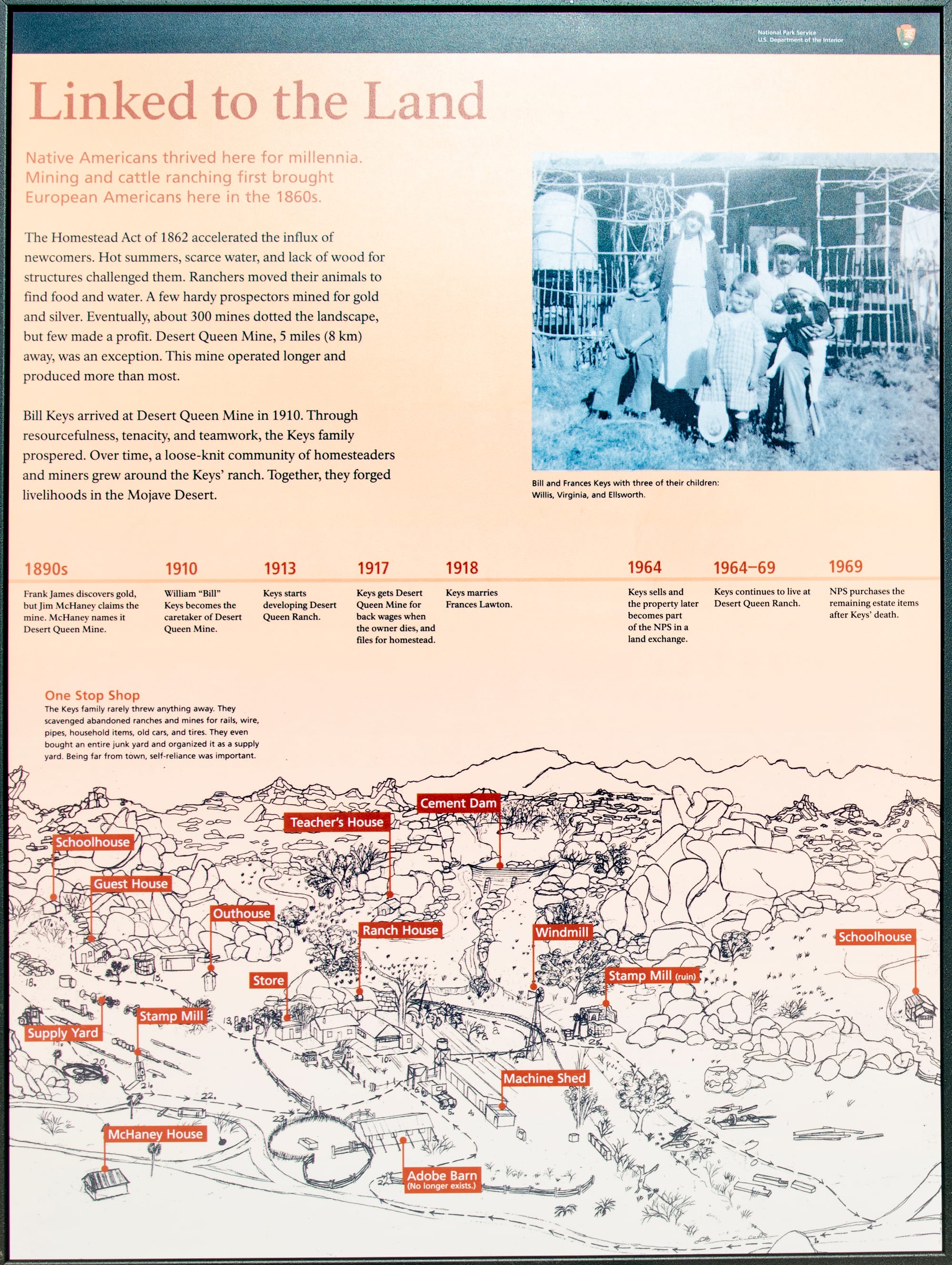
For a detailed map of the ranch layout, see this PDF sketch from Country Nodes, An Anthropological Evaluation of William Keys' Desert Queen Ranch, Joshua Tree National Monument, California by Patricia Parker Hickman.
Map
GPS Waypoint
To download waypoints and routes, open the Map in CalTopo, click Export (in the top left corner), and change the format to KML or GPX.
- Keys Ranch Road: 34.02164°, -116.15603°
- Keys Ranch Meeting Place: 34.03352°, -116.16697°
